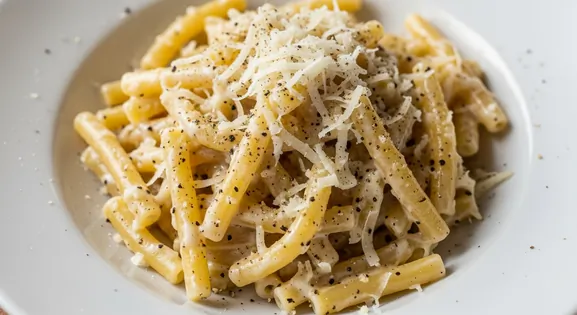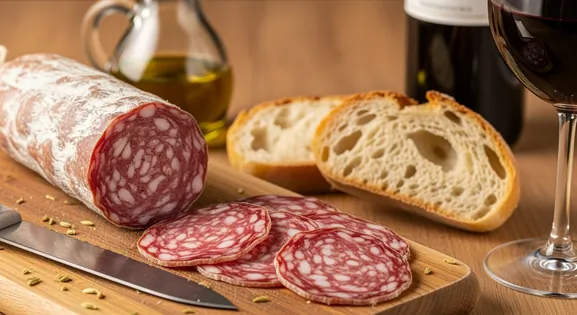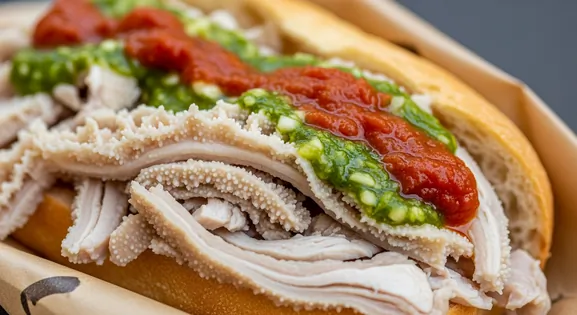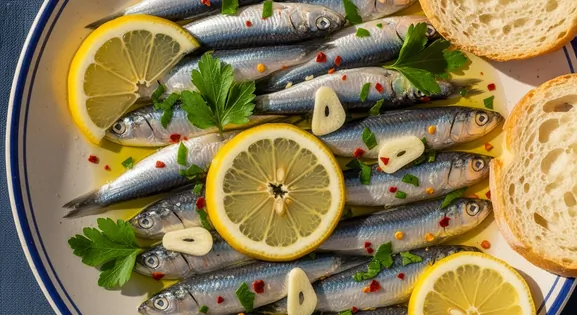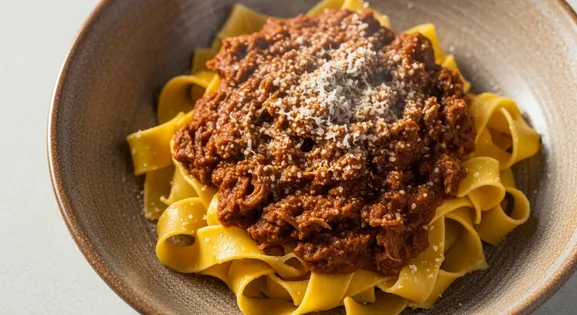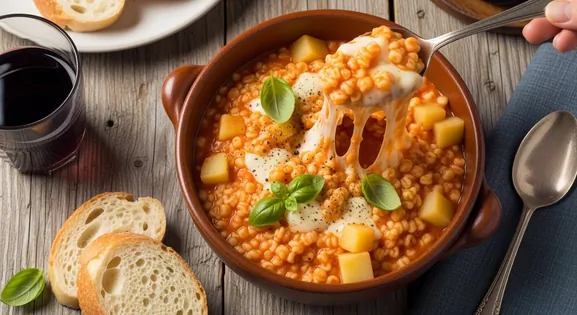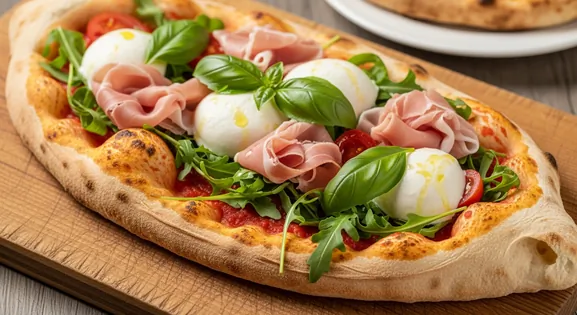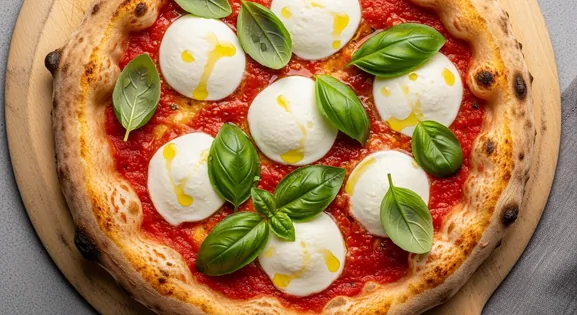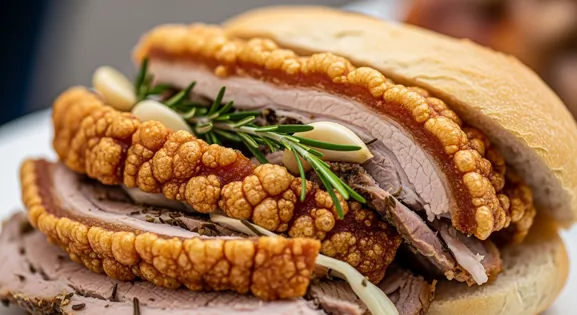Carbonara in Italy: A Complete Food Lover's Guide
Pasta alla Carbonara
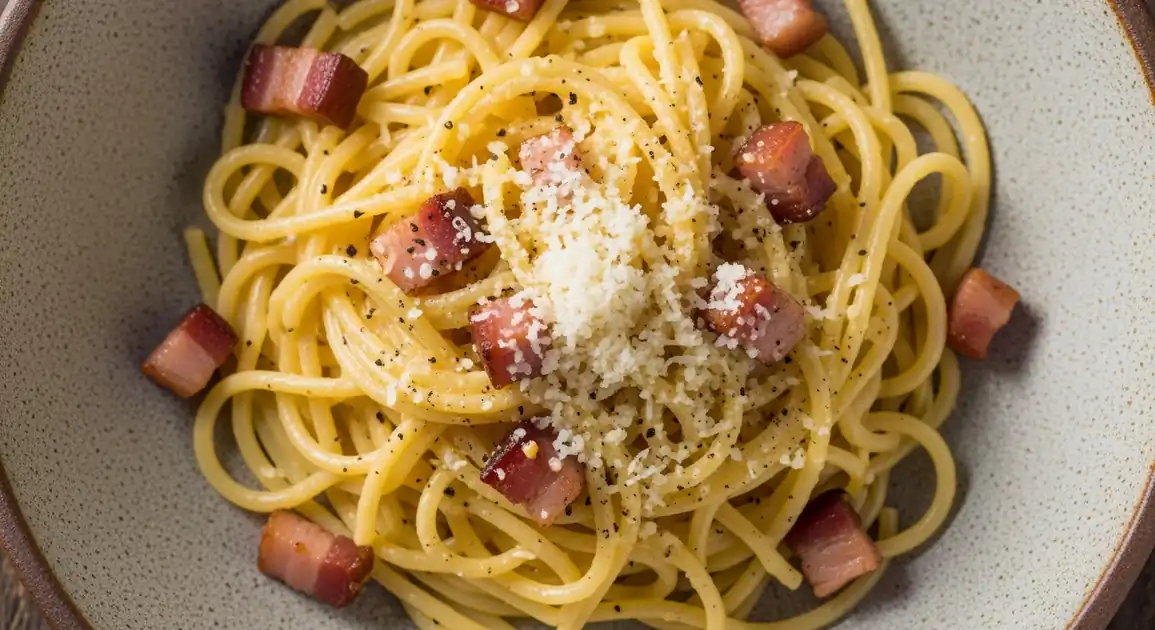
The Basics of Carbonara
Carbonara is one of Italy's most iconic pasta dishes, featuring perfectly al dente pasta coated in a silky sauce made from eggs, sharp Pecorino Romano cheese, black pepper, and crispy yet tender guanciale (cured pork jowl). Unlike many non-traditional versions, authentic Italian Carbonara never contains cream, garlic, or peas, relying instead on the perfect emulsion of eggs and starchy pasta water for its luxurious texture.
The Culinary Legend of Carbonara
Carbonara is relatively young in the ancient Roman culinary tradition, likely originating in the mid-20th century. The most credible theory suggests it was created around the end of World War II, possibly influenced by American soldiers' rations (eggs and bacon) combined with local ingredients and techniques. The name may derive from "carbonaro" (charcoal burner), suggesting it was a hearty meal eaten by charcoal workers, or from the abundant black pepper resembling coal dust. Despite its relatively recent origins, it's now considered one of the four classic pasta dishes of Roman cuisine, alongside Amatriciana, Cacio e Pepe, and Gricia.
Deconstructing Carbonara: Ingredients and Method
Traditional preparation starts with sautéing diced guanciale until it renders its fat and becomes crispy while maintaining some tenderness. In a separate bowl, eggs (sometimes whole eggs and additional yolks) are whisked with grated Pecorino Romano cheese and abundant freshly ground black pepper. The pasta, typically spaghetti, rigatoni, or mezze maniche, is cooked al dente and transferred directly to the pan with guanciale, then quickly tossed off the heat with the egg-cheese mixture. The residual heat from the pasta gently cooks the eggs without scrambling them, creating a smooth, silky coating. The critical technique is achieving the perfect temperature balance to create a creamy sauce without ending up with scrambled eggs.
Key Ingredients of Carbonara
Guanciale
Cured pork jowl, specifically from the pig's cheek, is absolutely essential for authentic Carbonara. It renders a rich, savory fat that forms the base of the sauce and provides crispy, tender pieces that add texture and depth.
Quality indicator: Look for firm, evenly marbled pieces with a deep, reddish-pink color and a distinct, savory aroma, indicating proper curing and quality. Its fat should be translucent when cooked.
Pecorino Romano Cheese
A hard, salty sheep's milk cheese, Pecorino Romano is crucial for the sauce's sharp, tangy flavor and contributes significantly to its creamy texture when emulsified with pasta water. Its distinct pungency is key to the dish's character.
Quality indicator: Choose aged Pecorino Romano with a crumbly texture, a sharp, pungent aroma, and a distinct salty taste. It should be freshly grated for optimal flavor and melting.
Eggs
Typically a mix of whole eggs and extra yolks, eggs form the creamy, emulsified sauce when combined with the hot pasta water and cheese. They provide richness and bind the ingredients, creating the signature silky coating without scrambling.
Quality indicator: Use fresh, high-quality eggs with vibrant, deep orange yolks for the best color, richness, and emulsifying properties in the sauce. Room temperature eggs blend more smoothly.
Black Pepper
Freshly ground black pepper, often in generous amounts, adds a pungent, aromatic counterpoint to the richness of the guanciale and cheese. Its coarse grind also provides a subtle textural element and visual appeal, resembling coal dust.
Quality indicator: Ensure it's freshly ground, not pre-ground, for maximum aroma, a subtle spicy kick, and the characteristic visual speckles throughout the sauce.
Local Carbonara Variations in Italy
Carbonara with Rigatoni
Using short, tube-shaped pasta instead of spaghetti. The ridged exterior and hollow center capture sauce beautifully.
Carbonara with Mezze Maniche
"Half sleeves" pasta (shorter, wider tubes) is a popular choice for Carbonara as they hold the sauce well.
Carbonara with Pancetta
Substituting pancetta (cured pork belly) for guanciale. Less traditional but still acceptable in some Italian establishments.
Egg Yolk Carbonara
Using only egg yolks instead of whole eggs for a richer, more velvety sauce texture.
Black Truffle Carbonara
A luxury variation adding shaved black truffle, typically found in upscale restaurants.
Enhancing the Flavor: Classic Pairings
Lazio White Wine
Wine
A crisp, dry white wine from the Lazio region, such as a Frascati or Est! Est!! Est!!! di Montefiascone, cuts through the richness of the Carbonara.
Light Red Wine
Wine
A light-bodied red wine like a Cesanese del Piglio or a young Chianti can complement the guanciale without overpowering the delicate egg sauce.
A Traveler's Guide to Authenticity
What to Look For
-
Reputable restaurants with good turnover of customers
Busy restaurants are more likely to have fresh ingredients and proper food handling practices.
-
Proper temperature - the dish should be served hot, immediately after preparation
This indicates the eggs have reached an appropriate temperature during sauce creation, supporting optimal food quality.
-
Silky, smooth sauce texture without visible bits of scrambled egg
Indicates proper technique where eggs have been gently cooked by the heat of the pasta without becoming fully scrambled.
-
Clean, well-maintained establishment with proper refrigeration
Suggests good handling of perishable ingredients like eggs and guanciale.
What to avoid
-
Pre-made, reheated Carbonara
The dish should always be prepared fresh to order. Reheating can compromise the quality and integrity of the egg-based sauce.
-
Very runny, completely raw-looking sauce
While the sauce should be silky, it shouldn't appear completely raw, which might indicate insufficient heat to properly prepare the eggs.
-
Restaurants with poor reviews specifically mentioning stomach issues
Previous diners' experiences can indicate potential hygiene problems.
-
Extremely cheap Carbonara in obvious tourist traps
Quality ingredients (especially proper guanciale and Pecorino Romano) have a cost. Suspiciously cheap versions might use inferior ingredients or pre-prepared sauces.
Explore Carbonara in Detail: City Guides
Discover where to find the best Carbonara and learn local tips in these cities:
Dietary Information
Dietary Information
Important Note for Travelers: Your safety is our priority. Below are the common allergens associated with the traditional preparation of this dish. However, recipes and ingredients can vary significantly between establishments. Always confirm all ingredients directly with the food vendor before ordering, especially if you have a severe allergy.
Potential Allergens
Dietary Suitability
How to Order Carbonara
Frequently Asked Questions about Carbonara
What is authentic Carbonara?
Authentic Italian Carbonara is a pasta dish made with just four main ingredients: pasta (usually spaghetti or rigatoni), guanciale (cured pork jowl), eggs, and aged Pecorino Romano cheese, plus freshly ground black pepper. Contrary to many non-Italian versions, traditional Carbonara never contains cream, garlic, peas, or other additions. The silky sauce comes from carefully mixing raw eggs with cheese and pasta cooking water.
Is eating Carbonara with raw eggs a concern?
In traditional restaurants, Carbonara is generally prepared to high standards despite using raw eggs. Professional chefs skillfully create the sauce by mixing eggs with hot pasta, which gently cooks them without scrambling. The pasta's heat typically brings eggs to an appropriate temperature. For optimal quality, choose reputable restaurants with good reviews and strong hygiene practices, avoiding places with low turnover or poor refrigeration.
What are the signs of good quality Carbonara?
High-quality Carbonara has a silky, glossy sauce that coats each strand of pasta without being watery or overly thick. The guanciale should be cut into small, evenly cooked pieces with both crispy and tender parts. The dish should have a pronounced peppery flavor balanced with the saltiness of the guanciale and cheese. There should be no cream, visible scrambled egg pieces, or unnecessary herbs. The pasta should be perfectly al dente.
How can I tell if a restaurant serves authentic Carbonara?
Check if the menu describes it simply as "Carbonara" or "Pasta alla Carbonara" without mentioning cream. Ask if they use guanciale (not bacon) and Pecorino Romano (not just Parmesan). Authentic places emphasize tradition. Look for restaurants frequented by locals, especially in traditional culinary areas, and avoid those with pictures showing a very creamy or yellow sauce.
Is Carbonara vegetarian?
Traditional Carbonara is not vegetarian as it contains guanciale (cured pork jowl). Some restaurants may offer vegetarian adaptations upon request, substituting meat with vegetables like zucchini or mushrooms. The dish still contains eggs and cheese, so it remains non-vegan. If vegetarian, specifically ask "È possibile avere una Carbonara vegetariana senza guanciale?" (Is it possible to have a vegetarian Carbonara without guanciale?).
What's the difference between authentic Italian Carbonara and international versions?
Authentic Italian Carbonara strictly adheres to the traditional recipe with guanciale, eggs, Pecorino Romano, and black pepper – no cream or garlic. Internationally, Carbonara often includes cream, bacon instead of guanciale, Parmesan, and sometimes additions like peas or mushrooms. These variations deviate significantly from the Italian standard.
Expert How-To Guides about Carbonara
How to Identify Authentic Italian Carbonara
Learn to spot the real thing from tourist versions or non-traditional adaptations across Italy.
- Check the menu description - authentic versions won't mention cream or other non-traditional ingredients.
- Look at other plates being served - the sauce should coat the pasta evenly without looking creamy or watery.
- Ask if they use guanciale, not pancetta or bacon. Guanciale has a distinct layered appearance of fat and meat.
- Inquire about the cheese - it should be Pecorino Romano, not just Parmesan.
- Notice the color - authentic Carbonara is a pale gold, not bright yellow or white.
- Observe the pepper - black pepper should be visibly present throughout the dish.
How to Choose a Quality Carbonara Restaurant
Learn how to identify and select restaurants that serve truly authentic and high-quality Carbonara throughout Italy, ensuring a memorable culinary experience.
- Avoid restaurants in extremely touristy areas, especially those with menu photos or English-only menus.
- Look for restaurants filled with locals, particularly during Italian dining hours (1 PM - 2:30 PM for lunch, 8 PM - 10 PM for dinner).
- Choose "trattorie" or "osterie" (casual, traditional eateries) over formal restaurants for more authentic versions.
- Check if Carbonara is listed under "primi piatti" (first courses) without special descriptions hinting at non-traditional ingredients.
- Consider restaurants in areas known for traditional cuisine, where the dish has strong roots.
- Ask locals (hotel staff, shopkeepers) where they would go for good Carbonara.
How to Eat Carbonara the Italian Way
Master the traditional Italian customs for enjoying this classic dish, ensuring you have the most authentic and respectful culinary experience.
- Eat it as a "primo piatto" (first course), not as a main dish or side.
- Twirl the pasta with a fork, not a spoon (Italians rarely use spoons for pasta).
- Mix the dish well before eating if it hasn't been thoroughly mixed in the kitchen.
- Pair with a local wine - try a crisp white from Lazio or a light red like Cesanese.
- Eat immediately while hot - Carbonara cools quickly and the texture changes.
- Don't add extra cheese before tasting - the dish should already be perfectly balanced.
Our Commitment to Quality
At Tasteplorers, our mission is to provide the most accurate and useful travel information in the world. To achieve this, all content on this site is created through our unique editorial framework. We utilize leading AI research tools, guided by our proprietary prompts, and a multi-stage validation process. This entire system is overseen by our editorial team to ensure everything we publish meets our high standards for accuracy, cultural nuance, and practical value for travelers.
Learn more about our Editorial Process and our Mission.
Countries
Explore regions
Europe
Discover Europe's diverse culinary landscape, from Mediterranean flavors to hearty Alpine fare. Learn to navigate markets, decode menus, and eat like a local.
Latin America & Caribbean
Discover the vibrant cuisines of Latin America & the Caribbean. Our expert guide covers everything from Mexican street food to Peruvian ceviche and market tips.
Oceania
Explore Oceania's diverse food scene. Learn about Polynesian earth ovens, Fijian feasts, and the vibrant café culture of Australia and New Zealand.
Southeast Asia
Explore Southeast Asia's diverse food cultures from Thailand to Vietnam. Get expert tips on navigating spice levels, choosing quality vendors, and understanding the rich traditions of the region.
